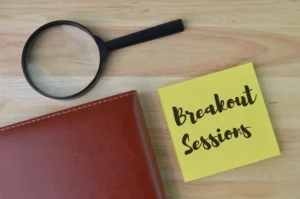Breakout trading has always attracted traders with its promise of fast moves and sharp profits. In recent years, a new factor has changed how traders approach these setups: social media alerts. Now, “Social Media Alerts in Breakout Trading” is a hot topic across trading circles. But do these real-time trading alerts actually give you an edge, or do they add more risk than reward? This article will break down the impact of social media alerts in breakout trading, explore their role in different breakout trading strategies, and share real-world examples to help you make smarter decisions.
What Are Social Media Alerts in Breakout Trading?
Social media alerts in breakout trading are messages or notifications shared on platforms like Telegram, X, Discord, or WhatsApp. These trading signals claim to highlight breakout opportunities in real time. Many traders now depend on these real-time trading alerts to catch fast market moves. The idea is simple: If someone spots a breakout and shares it instantly, the group can jump in before the move is gone.
However, this new layer of communication is a double-edged sword. On one hand, you get timely information and a sense of community. On the other hand, you risk crowd-following, information overload, and sometimes outright fakeouts. This is why understanding the psychology behind breakout trading strategies and how these alerts work is so important.
The Rise of Social Media Alerts and Trading Signals
The trading world has changed quickly. A decade ago, traders mostly relied on price action and technical analysis. Today, social media alerts in breakout trading have become standard for both new and experienced traders. Influencers, trading groups, and even AI bots share trading signals at lightning speed.
- Telegram and Discord channels offer hundreds of trading signals each day.
- X is filled with instant updates on market moves and breakout alerts.
- Many trading rooms use real-time trading alerts to coordinate entries and exits in popular assets.
This technology-driven trend means more people are exposed to the same opportunities at the same time. However, it also creates the risk of groupthink. When hundreds of traders pile into the same trade, volatility can spike and breakouts may fail. The psychology of trading is now influenced by the crowd as much as by the charts themselves.
Benefits of Using Social Media Alerts in Breakout Trading
Social media alerts in breakout trading can be powerful if you know how to use them. The benefits are clear for traders who use breakout trading strategies and need to move quickly.
- Speed: You get real-time trading alerts, so you can enter trades as soon as a breakout forms.
- Sentiment: Social media provides a read on what the crowd is watching, which can influence the psychology of trading.
- Coverage: No one can watch every chart. Alerts expand your coverage and show you setups you might miss.
Example:
A trader follows a well-known Telegram channel for breakout trading strategies. One day, the channel alerts a possible breakout on EURUSD. The trader checks the chart, confirms the signal with their analysis, and enters early. The breakout works, and they catch the move.
This example shows how social media alerts, when combined with a sound strategy, can improve results. Still, many traders do not verify the alert, which leads to big problems.
Risks and Drawbacks of Social Media Alerts in Breakout Trading
While the benefits look great, social media alerts in breakout trading also have serious downsides. The wrong approach can hurt your trading psychology and your account balance.
- Noise: With so many trading signals, it’s hard to know which ones matter.
- Herd Mentality: Large groups often act on the same alert, creating false breakouts.
- Manipulation: Influencers can share fake trading signals to move the market in their favour.
- Overtrading: The temptation to act on every real-time trading alert can lead to impulsive, low-quality trades.
Example:
During a breakout in Bitcoin, several big X accounts shared bullish trading signals within minutes. The price spiked up but quickly reversed as everyone tried to exit at once. This trap is known as a “fakeout,” and it happens more often in crowded social trades. It damages trading psychology, leaving traders fearful and reactive.
How Social Media Alerts Fit Into Breakout Trading Strategies
Social media alerts can be a helpful tool, but only when used with a proven breakout trading strategy. Relying only on alerts is a recipe for losses. Here’s how top traders use them wisely:
- Confirmation: They use social media alerts as a tip, not a trigger. Every alert is checked against their breakout trading strategies.
- Risk Management: They never bet too much on any single real-time trading alert.
- Independence: They trust their analysis and do not let trading signals override their own discipline.
Example:
A trader sees a real-time trading alert for a breakout in gold. Instead of jumping in, they check if the price has broken through resistance with volume, matching their own breakout trading strategy. Only when everything lines up do they take the trade.
Using Social Media Alerts Without Losing Your Edge
The key to using social media alerts in breakout trading is to combine them with your own research and risk controls. Consider these steps to keep your trading psychology strong and your results consistent:
- Limit Your Sources: Follow only a few trusted channels for trading signals.
- Avoid FOMO: Do not chase every alert. If you miss a move, wait for the next one.
- Set Alerts, Not Orders: Use social media to get notified, but enter trades only if your breakout trading strategy confirms.
- Track Results: Keep a record of trades taken from social media alerts. Over time, you will see which channels actually help.
Example:
A disciplined trader maintains a log. They notice that trades taken with both a social media alert and their own technical confirmation have a much higher success rate. This boosts their confidence and improves their trading psychology.
Real-World Case Studies: Social Media Alerts in Action
Case Study 1:
A group on Discord specialises in breakout trading strategies for US stocks. Members post real-time trading alerts as soon as certain volume and price levels are breached. The group shares a breakout alert on Tesla during earnings week. Several members confirm the setup with their indicators. The breakout holds, and the trade is profitable.
Case Study 2:
On a busy news day, a popular X account sends out trading signals for a breakout on GBPUSD. Hundreds of followers pile in. The move is short-lived and reverses sharply. Most followers take a loss. A few who used their own breakout trading strategies, waited for confirmation, and managed risk avoided the loss entirely.
These cases show that while social media alerts in breakout trading can help you spot good trades, they can also make you vulnerable to crowd mistakes.
Trading Psychology: The Biggest Risk With Social Media Alerts
The impact of social media on trading psychology is huge. Real-time trading alerts create urgency and often trigger FOMO. This can make traders impulsive, emotional, and inconsistent. Some common traps:
- Second-guessing your breakout trading strategy because of a flashy alert.
- Jumping into trades with no real plan or risk control.
- Chasing losses after a failed social media alert.
To avoid these issues, keep your mindset disciplined. Remember, no trading signal—no matter how urgent—should override your rules. The strongest breakout trading strategies are built on consistency and discipline, not on following the crowd.
How to Filter Quality Social Media Alerts in Breakout Trading
With so many trading signals out there, how can you know which are worth your attention? Here are some tips:
- Check the Track Record: Follow channels that post transparent win-loss stats.
- Ignore Hype: Look for real analysis, not just excitement or dramatic calls.
- Look for Alignment: The best social media alerts in breakout trading will often line up with what you already see on the chart.
Example:
A quality channel posts detailed reasons for every alert. They explain why the breakout is likely, mention key support or resistance levels, and discuss risk. This level of detail helps you trust the alert and incorporate it into your own breakout trading strategies.
The Role of Technology in Social Media Alerts
Today, many trading signals are generated by algorithms or bots that scan the market for breakout setups. These real-time trading alerts are faster and more data-driven than manual alerts. However, they are still only as good as the rules behind them.
- Algorithmic trading signals can alert you to breakouts in hundreds of assets at once.
- Bots are not emotional, so they avoid some of the trading psychology pitfalls that humans face.
- However, even the best bots can produce false signals in volatile markets.
Human judgement is still critical. The most successful traders use technology as a tool, but their own breakout trading strategies are the final filter.
When Social Media Alerts Backfire
It is tempting to let social media alerts drive your entire trading plan. However, this leads to several common problems:
- Overtrading: Chasing too many signals leads to poor performance.
- Poor Risk Management: Social media rarely reminds you to manage risk.
- Loss of Skill: Relying only on alerts erodes your own analysis skills.
Example:
A new trader gets addicted to Telegram trading signals. They start taking trades blindly and lose money. After some reflection, they decide to develop their own breakout trading strategy and use alerts only as a secondary tool. Their results improve dramatically.
Tips for Building a Profitable Breakout Trading Routine
If you want to use social media alerts in breakout trading without falling into the common traps, build a routine like this:
- Each morning, review your favourite charts and set up potential breakout trading strategies.
- Monitor social media alerts for opportunities, but never act without your own confirmation.
- Use trading psychology techniques, like journaling or mindfulness, to stay calm under pressure.
- Set stop-losses and manage risk on every trade, regardless of how strong the trading signal seems.
Over time, you will notice that your win rate improves and your confidence grows. You will rely less on outside noise and more on your own breakout trading strategy.
Conclusion: Are Social Media Alerts in Breakout Trading Worth It?
Social media alerts in breakout trading can be helpful, but only if you use them wisely. They bring speed and community insight to your process but also introduce crowd risks and emotional challenges. The key is to treat trading signals as one input, not the only one. Use your own breakout trading strategies, focus on trading psychology, and always manage risk.
In the fast-paced world of breakout trading, your greatest asset is discipline. Let social media alerts in breakout trading inform you, but never control you. This balanced approach will keep you ahead of the crowd and help you grow as a trader for the long run.
Read here to learn more about “Price Action Fakeout vs Indicators: Find the Real Winner“.

I’m Chaitali Sethi — a seasoned financial writer and strategist specializing in Forex trading, market behavior, and trader psychology. With a deep understanding of global markets and economic trends, I simplify complex financial concepts into clear, actionable insights that empower traders at every level. Whether it’s dissecting winning strategies, breaking down market sentiment, or helping traders build the right mindset, my content bridges the gap between information and implementation.




